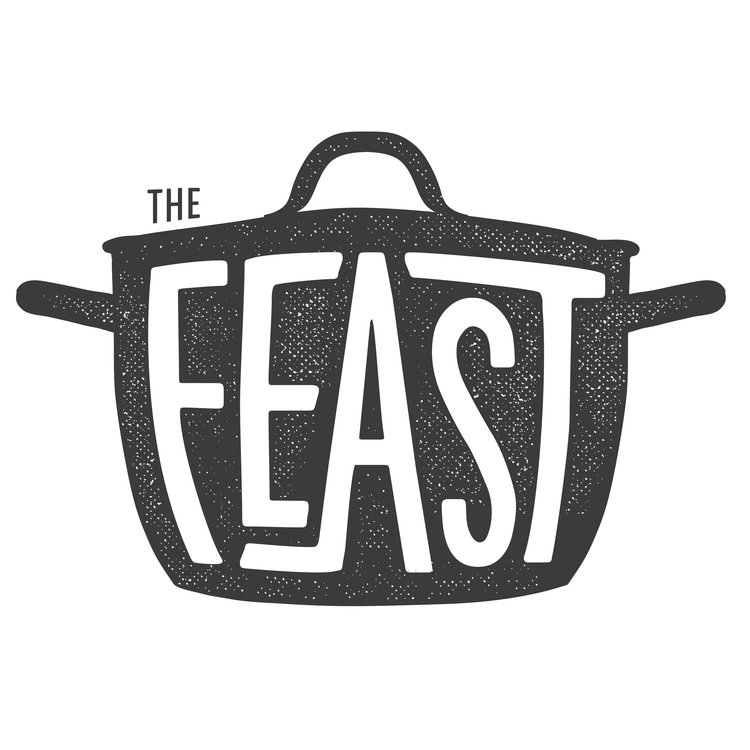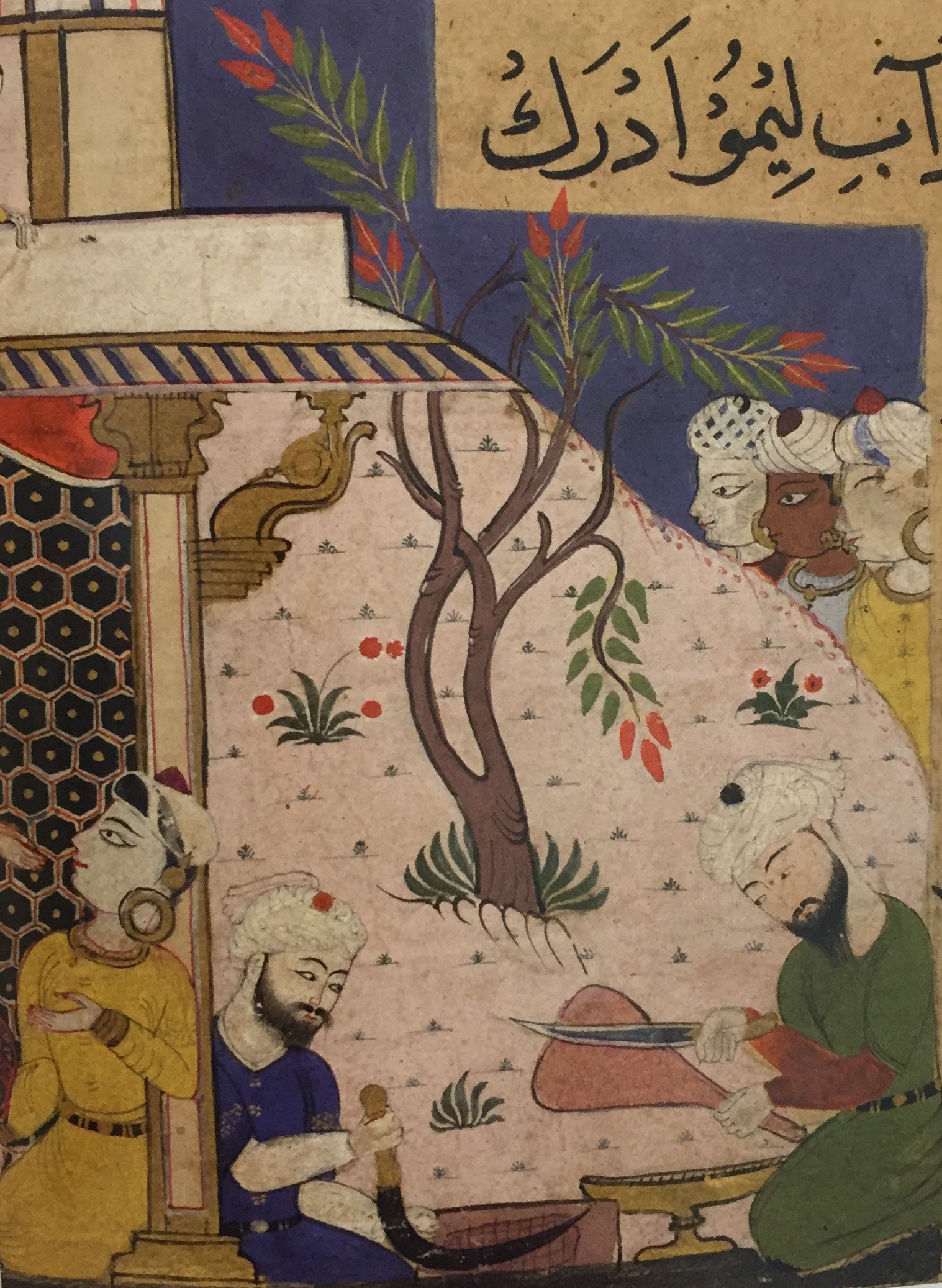Grilling a Fish, courtesy of Nawal Nasrallah
A Thousand and One Recipes:
Caliphate Cooking in 10th Century Baghdad
This week we're travelling to the golden age of the Islamic Empire in 10th century Baghdad. Hidden in a bustling paper market, we'll visit a mysterious bookmaker responsible for one of the largest cookbooks from the medieval world. While it may not have exactly 1,001 recipes (only 632 at last count...), the book is a treasure trove of medieval dining etiquette, recommendations for healthy eating, and some of the best food poetry we've ever read (ode to fried fish, anyone?). We'll speak with Nawal Nasrallah, editor and translator of Annals of the Caliphs' Kitchen: Ibn Sayyar al-Warraq's Tenth-Century Bagdadi Cookbook as she reveals the delicious and ancient cuisine of medieval Baghdad. We'll even make a few medieval Baghdadi recipes, discovering some surprising similarities to not only modern Iraqi cuisine, but culinary traditions throughout the world.
Written & Produced by Laura Carlson
Technical Direction by Mike Portt
Special Guest: Nawal Nasrallah
Find out more about Nawal's work at her website, www.iraqicookbook.com
You can buy her edition & translation of al-Warraq's 10th century cookbook, Annals of the Caliphs' Kitchen: Ibn Sayyar al-Warraq's Tenth-Century Baghdadi Cookbook from Brill Publishers at brill.com
Episode Soundtrack featuring "Alleys of Istanbul" by Turku, Nomads of the Silk Road (licensed under a Attribution License)
Learn more about our sponsors for this episode, Sudio Sweden, makers of stylish earbuds for the discerning podcast listener. Right now, Feast listeners can get a 15% discount of their products by entering FEAST17 at checkout. Find out more by visiting sudiosweden.com. (P.S., we're huge fans of the Vasa Blå headphones, check them out here!)
Cooks of Sultan Ghiyath preparing qima (finely chopped meat). Courtesy of Nawal Nasrallah.
Recipes from Medieval Baghdad
The following are just two out of the 600+ recipes found in Nawal Nasrallah's translation of Ibn Sayyar al-Warraq's 10th century Baghdadi cookbook. We've added a few notes in italics about how we interpreted the recipe for a modern kitchen.
A Recipe for Rakhbiniyya (dish with dried buttermilk) made by Nazif for al-Muqtadiri.
As Nawal notes, Nazif may have been the professional cook for the governor of Basra (located in modern Iraq).
Cut meat into medium-sized pieces, clean it, and put it in a pot along with soaked bruised chickpeas, olive oil, salt, and a piece of galangal. (We used boneless chicken breast for the meat; 2 breasts for 2 people. We also used 1 can of chickpeas, assuming they could stand in for the "soaked" version al-Warraq calls for).
Bring the pot to a boil and add to it juice of onion, leek, cilantro, and rue. Dissolve rakhbin (dried buttermilk) [in some liquid] and add it to the pot with whole leaves of watercress. (We had no idea how to "juice" an onion. So we finely diced the onion, leek, and cilantro and added them to the pot. Rue was impossible to find, but some helpful food historians suggested substituting dandelion leaves for it. So we did. We also used normal, i.e. "wet", buttermilk, adding about 2 cups to the pot.)
Our attempt at a 1000-year-old recipe!
When the meat is done, add to the pot ground spices such as coriander, just a trifle of black pepper, and ginger. Add as well shelled walnut and cassia. (We had trouble finding cassia, so used 2 cinnamon sticks instead. We also added about 2 tbsp ground coriander, and about 1/2 thumb sized piece of ginger diced. For the walnuts, we added about 1/4 cup of them, finely chopped).
When the pot stops bubbling and simmering [in the remaining heat of the fire], serve the dish, God willing. (We took this to mean let the stew simmer and reduce for some time. We left it on a low heat for about 15-20 minutes.)
A Cold Dish of Dressed Carrots (jazar mahshi)
Nawal explains that "mahshi" usually designated dish dressed in a sauce during the medieval period.
Delicious vinegar-y carrots!
Boil the carrots, cut them [crosswise] into rings like dirhams [coins}, and set them aside.
Chop onions, fresh herbs, and rue. Fry them very well in olive oil and pour on them murri (liquid fermented sauce) and vinegar. (We used dill and cilantro for the fresh herbs here. We also used more of the dandelion leaves, see above, as substitutes for the rue. We used white wine vinegar when the recipe calls for vinegar. Murri is a type of fermented sauce, comparable in many ways to ancient Roman garum. Universal in medieval Arabic cuisine, it could be made from fermented barley or fish. Food historians suggest substituting it with modern soy sauce to parallel a bit of the flavor.)
Add as well cassia, black pepper, galangal, coriander seeds, caraway seeds, ginger, spikenard, and cloves, all ground. (As above, we substituted a cinnamon stick for the cassia. We had no idea on spikenard, so we just went without.)
Bring the pot to a good boil and pour the vinegar mixture all over the carrots, which have been put on a platter. Chop rue on it and serve it, God willing.
A medieval Islamic hand-washing machine. Courtesy of Nawal Nasrallah.







